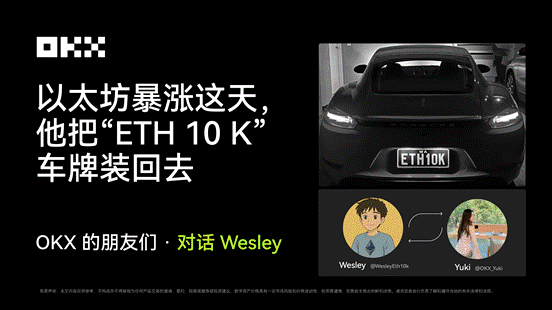
At the moment the red brake lights lit up, Wesley put the "ETH10K" license plate back on. He joked, "Cars can be bought again, positions can be added again, but face must be regained first."
After the Spring Festival, when ETH dropped and the market was full of "the judgment of 800 dollars seen," he sold all three cars: a Ferrari used for buying Coke, an SUV for grocery shopping, and a red Porsche with the "ETH10K" license plate, even parting with the license plate. He also sold two houses in Australia, went to a farm to pick fruit, did physical labor during the day, and self-taught coding at night, working for several project parties.
On August 11, the day ETH stood back at 4350, he didn’t rush to increase his position or change cars; the first thing he did was to redeem the license plate. He said this small metal plate was an explanation for his past self.
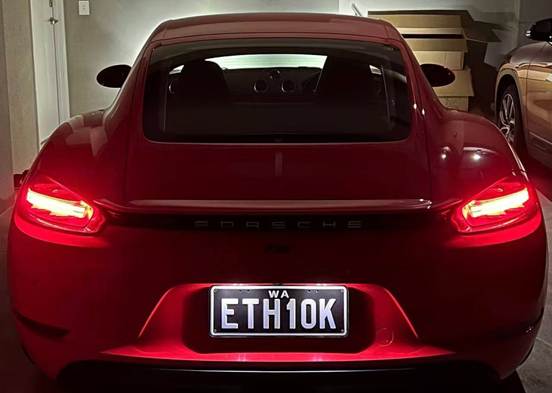
During an interview at OKX, I sat across from him. He didn’t look like a traditional "trader" but more like an engineer. He spoke logically, didn’t chase trendy words, and liked to start from "verifiability."
"I won't sell; I have no plans to sell. After it rises to 10,000, I will put ETH into Aave/Compound, borrow a bit of U, and still won't sell. Even if it pulls back, it doesn't matter; just low leverage is fine."
This sentence "I won't sell" was said calmly, like completing something that needed to be done.
From 2015 to 2025: a winding yet clear line.
2015—2016, Hong Kong investment bank → entrepreneurship (chatbot lending MVP).
Wesley graduated from the finance department and received a full-time offer in Hong Kong, working as a bond salesman for two years. "Going to work felt like acting; I'm a bit introverted, so I later quit and went home to start a business."
His first "product" was neither an app nor a website but a chatbot built using Facebook SDK—a network lending system aimed at students. "To be honest, I had only been coding for a month or two, and could not create a complete app or website. The easiest way for me was to embed the logic into the SDK, guiding users to complete actions through text." Back then, there was no ChatGPT or LLMs; he used conditional judgments to parse keywords, breaking down the lending process into executable dialogues, thus completing a rough but functional MVP.
After going online, due to the extremely minimal team (basically just him and a partner), the product logic was also light, and they broke even in two to three months; the total transaction volume was about 10 million, serving five to six hundred users.
"My initial motivation for entrepreneurship was simple: my family was poor, and I wanted to go abroad, but couldn't afford tuition." He rented a place in Wan Chai, paying a deposit and two months' rent, with just the deposit needing 26,000 HKD. The bank wouldn't lend, and the landlord didn't accept credit cards, so he had to gather money from several friends to settle down. "At that moment, I thought, for students like me, could there be a more decent path? Upload a student ID and scholarship records to get a small loan?" Among the first batch of borrowers, one student used the money to buy a ticket to Japan and paid it back as soon as he landed. Fortunately, there was not a single bad debt. The numbers were small, but surprisingly stable.
Later, after an argument with his partner, he was forced to learn coding by himself, "Otherwise, the company would fail." Soon, the entire company was sold, and the first accumulation of wealth was realized.
2016—2017, Australia working holiday: daytime financial analysis, nighttime self-learning code.
In 2016, after wrapping up his entrepreneurial project, he had the thought to go to Australia for a working holiday. He went to study first to obtain residency, but his undergraduate degree was in finance, and in Australia, "the job content must be consistent with the major," so he ultimately could only study finance and work in finance.
Working during the day at a very small community bank, where the job even involved counting the cash in and out of ATMs. Once, a bizarre case broke out: a gangster from South Africa tampered with the cash transport armored car process, each time loading a little less into the ATM, stealing 7 million over the year. The bank is a listed company, ultimately backed by insurance, but his position was also affected. Later, the bank faced hostile takeovers, and he was transferred to do financial analysis: equity valuation, merger models, Excel reports—solid processes, but very slow, with colleagues leaving work by three or four in the afternoon.
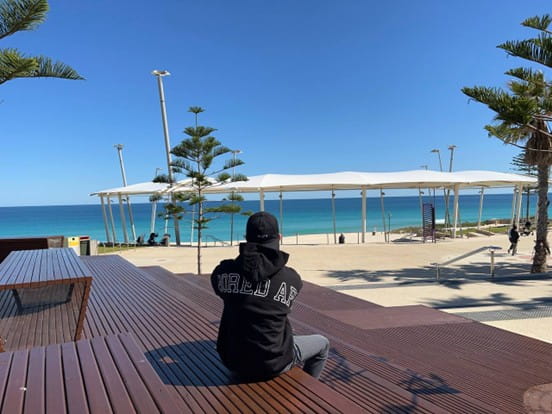
After evening, he dedicated the entire "blank time" to programming: casually finding courses online to learn, watching public lectures and PDF textbooks, piecing together data structures, algorithms, and operating systems; at the same time preparing for GRE/TOEFL, planning a path of "studying for a master’s in the US → obtaining OPT → entering a large factory."
Reality was not glamorous: having only written code for a year and not received systematic training, his resumes were repeatedly rejected. To maintain his residency in Australia, he briefly took finance-related courses, only to circle back to his old profession. After two years, he had saved about 400,000 RMB in Australia and became increasingly convinced—if he really wanted to code, he had to return to the Chinese community and solidify the engineering path. Thus, he chose to return, formally shifting to the engineering track and laying the foundation for later entering Web3.
2018—2019, Australia → return.
In the photos Wesley provided us, two were of cars, and another was of the sea in Australia, with the wind blowing from the vast pier. As for the next photo of a "room," it was not in Australia, but a small place he rented after returning home; the room wasn't large but was very bright.
"The view is nice, and many friends are willing to come," he said with a smile.

After returning to the Chinese community, Wesley joined a startup insurance company in Hong Kong as a backend engineer. At that time, a cryptocurrency exchange collapsed, leaving eighty or ninety practitioners unemployed, and the company hired quite a few people at once, "The language in the office suddenly turned into crypto jargon." This is how he officially entered the circle.
In 2019, he began allocating ETH and Synthetix (SNX)—"a year before DeFi Summer." By the summer of 2020, SNX surged dramatically in the DeFi narrative, and he self-deprecatingly said, "At that time, there wasn't much money; even a big rise was just a fleeting glimpse." What really prompted him to take action was funding rate arbitrage: working with a colleague to create an algorithm for spot-contract basis/funding rate arbitrage. By the end of 2020, it was executed, achieving an annualized return of 80% to 90%.
"The problem is I have no money." He took a PDF page to meet old classmates and friends in finance: investment banks, private banking client managers, some HNW. He didn’t talk about "alchemy," but rather about "spot vs. contract basis, holding costs, Carry," explaining it in a way that traditional finance people could understand. At that time, the market had already shown interest in Crypto, but many people didn't want to bear the volatility; a solution that offered crypto exposure + stable yields was very attractive. Ultimately, he raised nearly ten million dollars in a small scale in Hong Kong and Singapore, starting to trade in real time.
The team size was almost zero—"Basically just me." He connected the API to the exchange for automated execution, and in the first year, his strategy achieved about 87% returns. After making money, he suddenly realized: "I was running on the API, but actually didn’t understand the blockchain itself well enough." So he simply resigned and systematically learned EVM: from Yellow Paper to Solidity, from reading contracts and bytecode to writing small tools himself. "Some friends were doing core development in top teams," so he followed them to solidify his engineering foundation, making "getting it to run" a bit more robust.
2020—2021, DeFi Summer bull market confirmed ETH.
What really pulled him into the center of the Web3 wave was not the noisy stories of sudden wealth, but a craft of "skill in the gaps": stitching the small difference between spot prices and contract prices into a path that can be walked repeatedly. In the industry, it’s called funding rate/basis arbitrage—no directional bets, no chasing trends, but discipline and patience. During the good market years, he even acted as a proxy for others, achieving an AUM in the tens of millions of RMB and a paper annualized return of up to 87%. About 60 clients opened accounts at the exchange and connected the API. "I was still worried they wouldn’t pay the 30% management fee," he laughed, saying ultimately, "the key is in their hands; I can at most turn off the API." "It’s like fixing a channel, with cars coming and going, slowly making money."
The impulse to write code completely took over at that time. He joined a top project as a "CTO" doing coding: publishing, rolling back, changing parameters, receiving price data, and pondering clearing rules. The chain is not always safe—during his first week, the project was hacked, losing millions; a few months later, they were hit again, with tens of millions taken by hackers. Two shocks dragged him back to reality from the bull market euphoria and established a set of order: key operations with multi-signature and time locks, avoid upgrades if possible; every deployment must match bytecode; start with small traffic gradient testing, and if issues arise, trigger a rollback. "Code can be verified, and the system deserves trust," he said.
After the second incident, he chose to leave and start his own venture, creating a small system for NFT trading/distribution, settling at "fixed fee + 10% commission," with one deal earning him 80 ETH. During this time, ETH truly solidified its position in his heart. It wasn't about who said Ethereum should reach a certain price, but it provided a verifiable certainty: visible and accurate before interactions; lending, exchanging, vaults, derivatives pieced together like Legos, with tangible handles to work with.
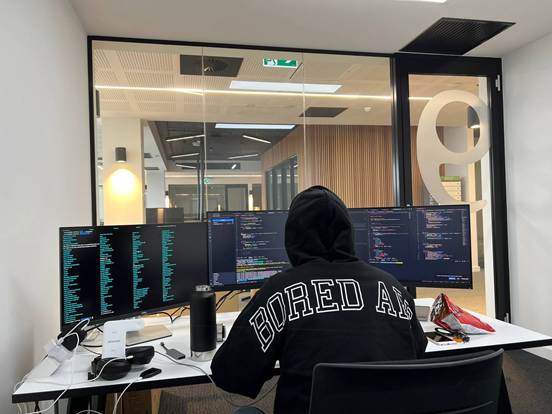
As for the price, he prefers to give the decision-making power to structure rather than emotions—"(Ethereum) is transparent and clear; Solana is relatively like a black box, where you can't see anything… so it's more centralized." He said, "At least when I interact with every EVM, I can first go see (the code/bytecode), and then decide whether to interact with it or not."
This set of "structure-first" simple principles was not adhered to without regrets. During the most frenzied market times, he was also pushed along by the tide. In 2021, he bought a BAYC for 35 ETH, and the floor price skyrocketed to 140 ETH, but he never sold. Because in the crypto circle, as long as he showed the monkey avatar, someone would always come up to talk.
At the peak of the bull market—after the Otherside launch, he spent hundreds of ETH to buy Otherside containing Koda and Azuki. The flip turned faster than flipping a book; once 'blue-chip', it quickly collapsed, ultimately nearly reaching zero.
"Later I realized that using these materialized symbols to attract others didn't suit me." When the bear market came, he almost emptied his possessions, dragging only a checked suitcase, becoming a digital nomad across Asia. Unexpectedly, he began to enjoy the way of connecting only through conversation and interaction—no boasting, no attachments, just the challenge of communication itself.
In 2022, he returned to Australia and bought the "ETH10K" license plate.
With the incidents of LUNA and FTX, he gradually withdrew client accounts: "Only run my own money." During those chaotic months, he flew to Australia to give himself an explanation for his "youth": a big house by the sea, a yard, a sports car, living very close to the beach, watching the sea at dusk. He even pursued a master’s degree in IT as a pathway to residency, thinking about "settling down in life."
It was also then that he registered the "ETH10K" license plate in Perth—at that time, ETH was still around 3000U, and he sensed that 10K was "not far away," treating this plate as a bet, also a belief.
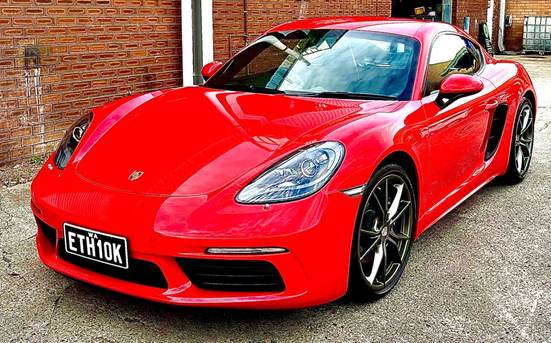
Reality quickly dulled the edges of romance. In a large house of two or three hundred square meters, he only went to one room in six months; with three bathrooms in the house, only one was frequently used. The sports car was hardly driven, and groceries relied on a regular SUV. The sea breeze was good during the day, but at night it felt empty—the rhythm was like a retirement town, with few people and sparse socializing. He suddenly realized that the symbols he once thought were important—big houses, nice cars, ocean views—did not provide meaning.
He felt even more pressure from his trading system. During a seven-minute outage of the trading platform API in the early morning, he was executing a funding rate strategy of "long spot, short contract," which should theoretically hedge each other—but during those 7 minutes, a certain coin surged two to three times. At that time, there was no complete cross-margin, and he had to manually transfer spot profits to cover contract margins; once the API went down, balance was lost, and the contract leg was liquidated, causing further losses on the spot leg. That time, three small clients’ accounts were breached, and he compensated them in full with that month's performance share.
He doesn’t guarantee capital preservation and makes clear all the risks, charging a 30% performance fee when making profits. For many who are used to "2% management fee + 20% commission" traditional traders, this model of "only sharing profits" more closely aligns both parties' interests. However, after the FTX crash, he became clearer: if my position is there, it could very well go to zero. Coupled with the instability of the API, counterparty risks, and the increasing number of times he woke up at night, he made a decision—return external funds and only run his own money.
2023—2025, sell the villa to pick apples, invest regularly in Ethereum; buy back the license plate as a belief.
Looking back, what he truly grasped about "long-term" began with that major drop. In 2022, Ethereum dropped from 4871 all the way down to 880, and he was observing the market, "When it hit eight or nine hundred, I did think about cutting losses, but in the end, I held on." After that, he handed over decision-making to discipline: starting regular investments from around 1200, "When it hit 1000, I kept buying, all the way to now. If it drops 50U, I treat it as a crash and add funds." With the other hand, he began to clear out those things he thought would bring satisfaction—ocean-view villas, sports cars. He said that during that time, "I felt quite empty," so he ended up selling both the house and car, running off to the farm to pick apples. With more sweat, his heart settled down: cash flow relied on strategy, accumulation relied on regular investment.
Starting in 2023, he completely cleared external funds, only running his own accounts: still the same low leverage, non-directional strategy; at the same time, taking contract work, writing smart contracts/NFT contracts, settling at "fixed fee + commission." By 2025, this funding rate arbitrage program could still achieve about 10% annualized return—"I thought I would only play for three years, but unexpectedly, the fifth year is still running." He assessed that "going forward, it’s likely to be thinner, but small volumes can still make a profit." The methods are not flashy: verify what can be validated, gray out what can be rolled back, and don’t run naked on what can be hedged.
In the spring of 2025, he bought back the "ETH10K" license plate. It was not for show, but more like giving himself a footnote: the choices made during the bear market, he is still willing to sign today.
Why Ethereum? Seeking assurance in the code.
When Yuki asked him, "Why is the license plate Ethereum?" Wesley gave an engineer-like answer: because it can be verified.
His logic is straightforward—if a contract is non-upgradable, it will run according to the code on the chain, and there's no need to trust anyone; in the EVM ecosystem, you can first look at the source code or bytecode and then decide whether to interact with it. "For an engineer like me, this is the sense of trust."
He also talked about Solana: "It's very powerful, but after deployment, it can't be verified on-chain like EVM, so I personally have less control." This is not a denial but a preference: weighting where things can be understood and reproduced.
What about BTC? He respects its status as "digital gold" and acknowledges that having BTC + ETH in a long-term portfolio is reasonable; but when it comes to his own position, he almost only buys ETH—"You can say it's 'professional bias.' In my heart, Ethereum is more like an operating system like iOS/Android."
This summer, he got back the "ETH10K" license plate again. After the interview, he was flying to Bali, then transferring to Phu Quoc Island. Before leaving, he sent a message to his friends: "When the red brake lights come on, the clouds of the bear market are left behind in the rearview mirror."
We returned to life from "verifiability" and "risk constraints": he loves cars and enjoys capturing the red glow of their taillights; he would also roll back repeatedly for a small bug at three in the morning. On the day when ETH surged, the first thing he redeemed was the license plate—"Not vanity, but an explanation for my past self."
He doesn’t encourage people to "all in," but prefers to share "how to learn." The simplest line goes like this: first use Udemy's Python Bootcamp to get the code running, then use O'Reilly's Introducing Python (2nd) to fill in the basics and details, and finally take Coursera's "Data Structures & Algorithms" specialization course to solidify the underlying logic—first learn to do, then understand why.
This interview belongs to the friends series of OKX. What we care about is always the people who place technology and finance on the same table: the market will fluctuate, and the methods must be verifiable. Wesley's story is merely a footnote—low leverage, heavy auditing, and verifiability are the underlying rules for traversing cycles.
If Ethereum at 10,000 dollars is ultimately coming, that "ETH10K" license plate will remind him first: drive slowly, don’t get carried away.
Disclaimer: This article is for reference only. It represents the author's view and does not represent the position of OKX. This article does not intend to provide (i) investment advice or recommendations; (ii) offers or solicitations to purchase, sell, or hold digital assets; (iii) financial, accounting, legal, or tax advice. We do not guarantee the accuracy, completeness, or usefulness of such information. Holding digital assets (including stablecoins and NFTs) involves high risks and can fluctuate significantly. You should carefully consider whether trading or holding digital assets is suitable for you based on your financial situation. Please consult your legal/tax/investment professionals regarding your specific circumstances. You are responsible for understanding and complying with local applicable laws and regulations.
This article comes from submissions and does not represent the views of BlockBeats.



